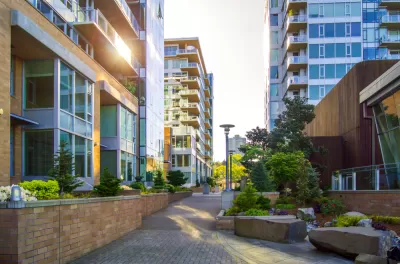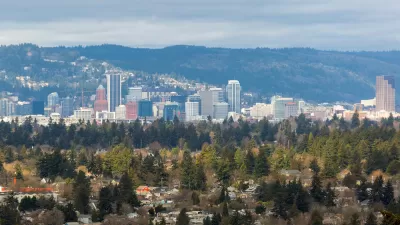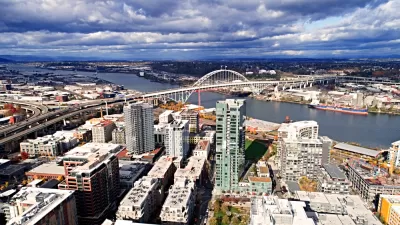The difference between a proposed RM2 zoning designation with off-street parking requirements, versus with the parking requirements is massive, according to this article.

A proposal to re-legalize fourplexes citywide in Portland, known as the Residential Infill Project, has been overshadowing another, related reform, according to an article by Michael Andersen.
"That other reform applies not to low-density lots but to mid-density areas," according to Andersen. The reform package is called "Better Housing by Design," and it would allow various changes to land use regulations in the city's mid-density neighborhoods, like allowing include shared interior courtyards on big blocks in East Portland, regulating buildings by size rather than unit count, and offering size bonuses to nonprofit developers of below-market housing.
Andersen focuses in more detail on one proposal included in Better Buildings by Design: a change to parking requirements that could create a bunch of opportunities to develop mixed-income condo buildings for the middle and working class instead of high-cost townhomes.
If off-street parking isn't required in the city’s new "RM2" zone, the most profitable development type is a "32-unit mixed-income building, including 28 market-rate condos selling for an average of $280,000 and four below-market condos…" If off-street parking is required, the calculus changes to ten townhomes, "each valued at $733,000, with an on-site garage."
Andersen presents the pro forma for this conclusion, as calculated by real-estate economics firm EPS Inc.
The Better Housing by Design package appeared before the Portland City Council earlier this month, but the item was continued until a November 6 meeting to accommodate the lass of public testimony signed up to speak on the subject.
FULL STORY: IN MID-DENSITY ZONES, PORTLAND HAS A CHOICE: GARAGES OR LOW PRICES?

Alabama: Trump Terminates Settlements for Black Communities Harmed By Raw Sewage
Trump deemed the landmark civil rights agreement “illegal DEI and environmental justice policy.”

Planetizen Federal Action Tracker
A weekly monitor of how Trump’s orders and actions are impacting planners and planning in America.

Why Should We Subsidize Public Transportation?
Many public transit agencies face financial stress due to rising costs, declining fare revenue, and declining subsidies. Transit advocates must provide a strong business case for increasing public transit funding.

Understanding Road Diets
An explainer from Momentum highlights the advantages of reducing vehicle lanes in favor of more bike, transit, and pedestrian infrastructure.

New California Law Regulates Warehouse Pollution
A new law tightens building and emissions regulations for large distribution warehouses to mitigate air pollution and traffic in surrounding communities.

Phoenix Announces Opening Date for Light Rail Extension
The South Central extension will connect South Phoenix to downtown and other major hubs starting on June 7.
Urban Design for Planners 1: Software Tools
This six-course series explores essential urban design concepts using open source software and equips planners with the tools they need to participate fully in the urban design process.
Planning for Universal Design
Learn the tools for implementing Universal Design in planning regulations.
Caltrans
Smith Gee Studio
Institute for Housing and Urban Development Studies (IHS)
City of Grandview
Harvard GSD Executive Education
Toledo-Lucas County Plan Commissions
Salt Lake City
NYU Wagner Graduate School of Public Service





























